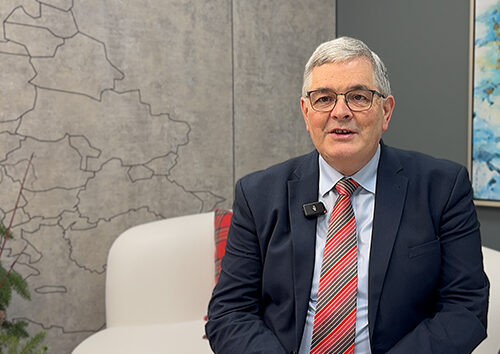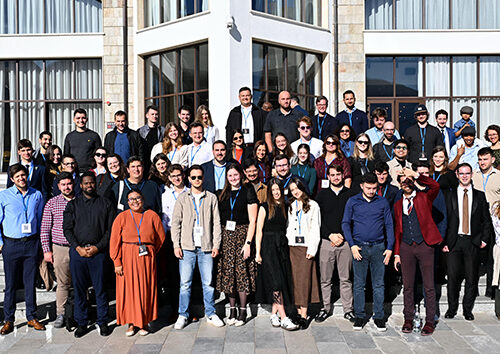29 April 2021 | St Albans, UK [Petar Popivanov]
“Pharaoh said: Have only men go and worship … Moses answered: We will go with our young and our old, with our sons and our daughters …, because we are to celebrate a festival to the Lord.” Exodus 10:10, 9
Over the weekend of 16-18 April, three departments of the Trans-European Division collaborated to create an online Intergenerational Worship (IGW) workshop.
The virtual event attracted more than 70 participants from at least 12 TED countries, and 3 EUD countries who wanted to explore the concept of mixed generational worship. The event was led by Karen Holford (Family Ministries), together with Clair Sanches-Schutte (Children’s Ministries) and Zlatko Musija (Youth Ministries). The attendees approached the training with great enthusiasm, eager to learn more. Their excitement was also mixed with scepticism about how to translate their learning to their local congregations.
Can worship be multigenerational? Can children, teenagers, adults and elderly spend quality time together and still be as spiritually nurtured as if they had been immersed in their own age group? Isn’t intergenerational worship the new fad, created by progressively-minded pastors, desperately trying to retain Millennials, Gen Z and Alpha in increasingly aging churches?
If you dip into your most recent memories and try to remember the last in-person worship in your local church, it probably started with an adult prayer, welcoming and announcements by an elder (adult!), worship leader or two (all adults!), offering collection by deacons (adults!) and sermon by an adult pastor. Using the word “adult” so many times in one sentence might be linguistically incorrect, but I also wonder whether it is theologically sound? Even when churches do focus on their children and teenagers, most of the services are designed by adults and presented to adults with the occasional youngsters reading the scripture text or singing a special item. Children are brought to church, dressed in clothes that are not their usual, comfortable ones, sat in adults’ chairs, with their little legs hanging in the air, shushed to keep quiet and told to watch and listen, even if all they can see are the backs of the adults sitting in front of them.
Now, I invite you to imagine that Jesus walks into this church. He interrupts the service just between the announcements and the congregational prayer. There is something in the way He moves and speaks that resonates with everyone. Children jump from their chairs and, before their parents manage to shush and stop them, they run towards Him. While the foggy minds of the confused adults are still trying to judge if Jesus has the right to interrupt the “perfect” order of service, the loving perfection in Him attracts the little ones. I can tell you from first-hand experience – children do not run towards a grinch. Teens suddenly surface from the back of the church and join Jesus as He moves to the front. Their unconventional attire is longer a reason for judgement by someone who sees the value of their inquisitive minds and knows them as beloved children. The elder and the worship leader at the front are confused. They look at Jesus and then at the pastor, bewilderingly asking the question “So who is preaching today?” Jesus sits at the pulpit. Teens surround him. He takes a child in his lap and preaches the shortest sermon ever: “Let the little children come to me and do not hinder them, for the kingdom of heaven belongs to such as these”.
Reading Bible verses about children and young people nurtured in faith is one thing. Getting our minds wrapped around the idea of intergenerational worship is a completely different thought process. On one hand, I thank God that our Church, as an institution, has considered the needs of each age group by forming distinct departments for them (children’s ministry, youth ministry, family ministry, etc.). On the other, I ask myself whether we have gone too far, by creating bubbles around each generation, and blocked the crossroads where they can have a corporate worship experience?
The three-day training started by exploring worship in Bible times. All through the ages worship was mainly experiential, from the garden in Eden, through the nomadic Abraham and the tabernacle sacrifices, to the temple, synagogues and then to the family home and house churches. Worship and festivals involved the senses of smell, touch, sight, movement and even taste. Jesus ministry rarely happened between walls. The seashore, the mountainside, the friends’ homes and the marketplace, were scenes rich in sensory experiences that added rich dimensions to the messages of salvation and God’s loving kingdom. Compared to this, our church services often look sterile. And yet, we as humans still have the same learning patterns. 70% of adults and most children under 12 prefer to learn visually and actively. In contrast, at least 80% of our services are verbal – hymns, sermons, prayers, readings. The education system has long ago moved away from exclusively verbal teaching. It transpires that churches remain one of the few places in our culture where important truths are taught in a difficult-to-digest manner. No wonder kids wiggle and make noise. They do not resist the message. The Word simply cannot reach them. A change is needed, and Intergenerational Worship can offer a timely solution.
So, what is intergenerational worship, and what is not?
- IGW is NOT dumbing down the service just so children can have their own space. It IS a community of believers who long to create a safe space for kids, teenagers, adults and elderly to experience God in different parts of church service.
- IGW is NOT adults pretending to be children and clapping hands to the beat of “Jesus loves the little children”. It IS an opportunity where children can build long-lasting faith alongside adults, and adults can enter the kingdom through the freshness of a child’s faith.
- IGW is NOT putting the needs of one generation above those of others. It IS about blending the unique experience of each generation in a gospel-based, grace filled flow in the presence of the Most High.
- IGW is NOT a disruption of a perfect service. It IS a heavenly harmony.
If you struggle with the idea of mixed generation worship, probably this is all you need to read for now. I suggest you contemplate and consider this concept in prayer to God.
But if the idea has grabbed your attention and you already imagine how it could play into your church, then you would be pleased to know that there are many ways to build a service programme with an IGW framework in mind. This was the main part of our Sabbath training. We learnt that each church is at a different stage in its worship journey and different options may be currently acceptable or not acceptable. Change in church culture can be a difficult idea to digest. Many people hold very strongly to a traditional, liturgical style of worship, although it originated only several hundred years ago, and is not rooted in the Bible. Transforming church services in a generationally inclusive way rather than exclusive manner, will require baby steps and different road maps for different congregations. Several models were suggested for consideration:
- One child/teen involved in the service each week (i.e. collecting offering or praying as a family)
- Mentoring and training children to become part of church life in a meaningful way (i.e. shadowing a board meeting)
- A carefully planned integrational worship once a month
- Flow church – semi-structured service with choices of activities (e.g. following a short sermonette by an adult on the Exodus experience, the church moves on to taste the “manna snacks” and “rocky juice” served by the kids)
- Story-based church – the service outline follows the story (i.e. Zacchaeus’ story)
- Messy church – a lively story and craft-based church with a meal
- Outdoor church – useful for camps and times of social distancing
11 international teams, mentored by Holford, Sanches-Schutte and Musija, developed bespoke programmes for IGW using the above formats. Within the next few weeks, you will be able to find on the TED website the videos of all the training presentations, the training workbook, and the intergenerational worship outlines created by the teams.
In conclusion, a word of caution is due. IGW is not an off-the-peg concept. Ideas and programmes are only the seeds. Under the guidance of the Holy Spirit, and denomination-wide buy-in from divisions, unions and missions to the local church boards, ministry leaders and congregations, the enacted idea of IGW has the untapped potential to transform the experience we call “worship”. Churches will once again become places, where long-time members and their unchurched grandchildren can enjoy being able to “taste and see that God is good” (Ps 34:8). Churches will once again live up to what Jesus called them to be in the first place – the light and salt of the earth (Matt 5:13-16). And in doing so, in a world torn in divisions and exclusivity, intergenerational Christian communities can become a living testimony that where people place boundaries, God opens horizons.
“Praise the Lord…Young men and women, old men and children…Praise the name of the Lord for His name is exalted” Ps 148:1,12.
tedNEWS Staff: Victor Hulbert, editor; Deana Stojković, associate editor
119 St Peter’s Street, St Albans, Herts, AL1 3EY, England
E-mail: [email protected]
Website: www.ted.adventist.org
tedNEWS is an information bulletin issued by the communication department of the Seventh-day Adventist Church in the Trans-European Division. Readers are free to republish or share this article with appropriate credit including an active hyperlink to the original article.



